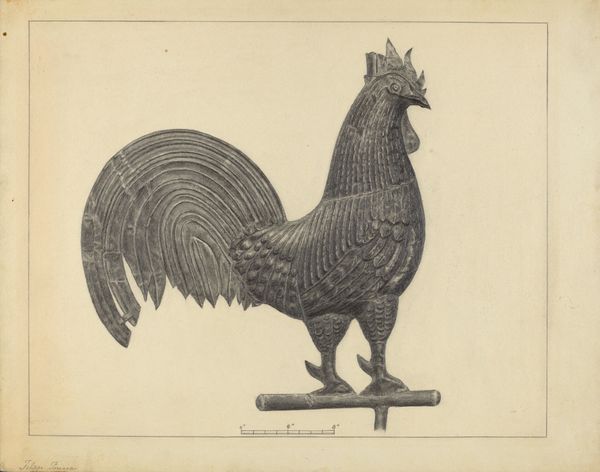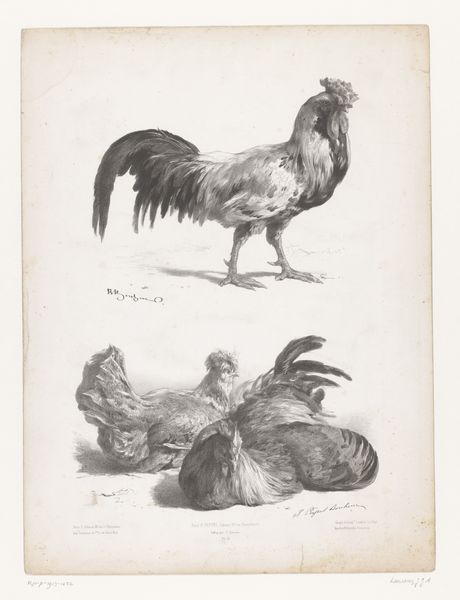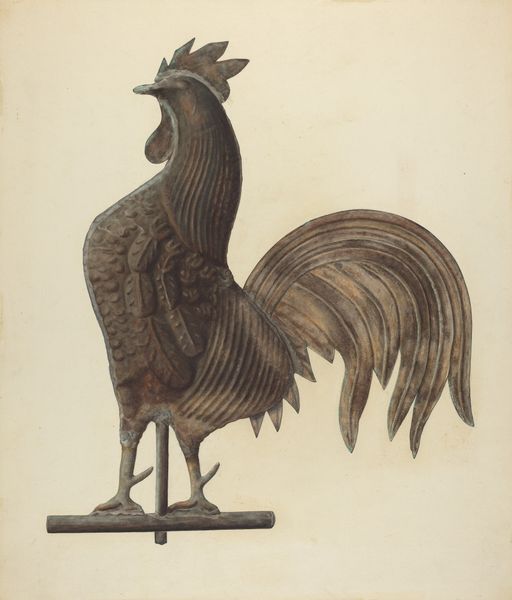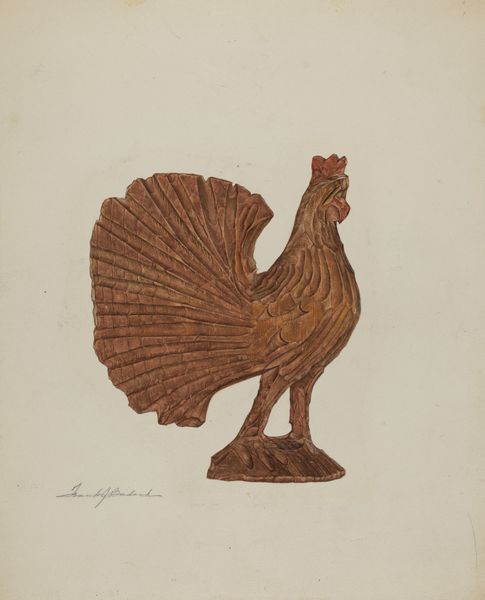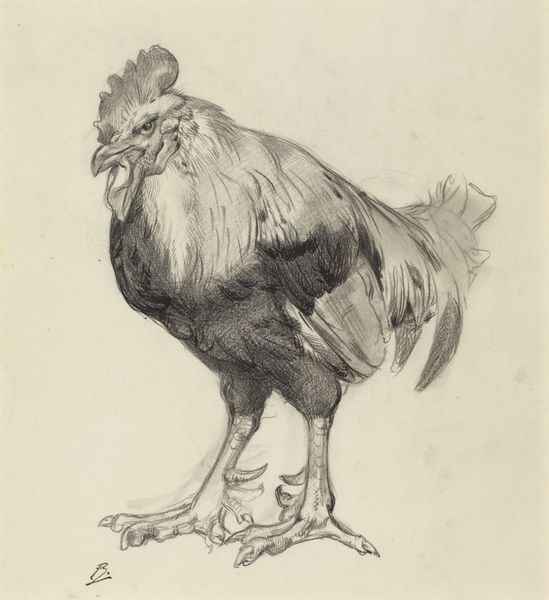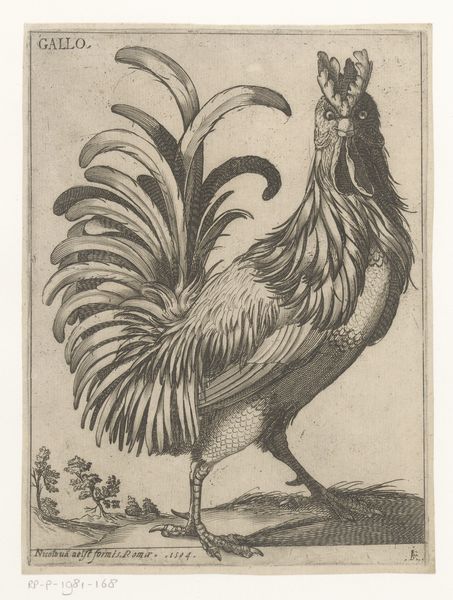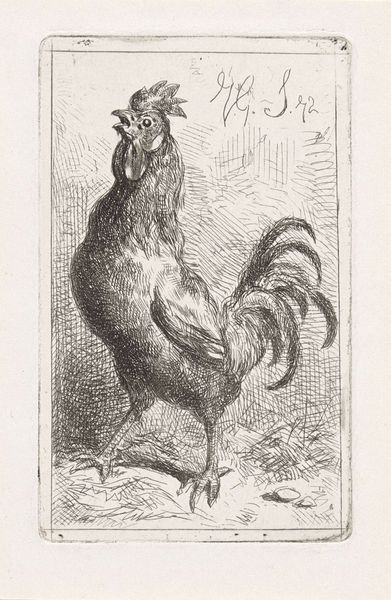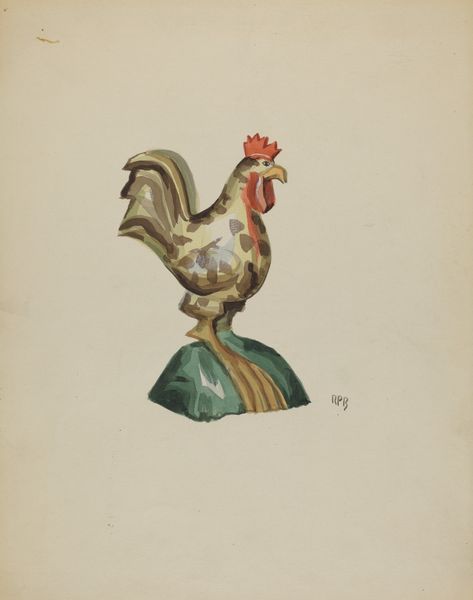
drawing, pencil
#
pencil drawn
#
drawing
#
pencil sketch
#
figuration
#
pencil drawing
#
pencil
#
academic-art
Dimensions: overall: 28.3 x 22.7 cm (11 1/8 x 8 15/16 in.) Original IAD Object: 4 5/8" wide; 6 5/8" long; 3/4" high
Copyright: National Gallery of Art: CC0 1.0
Helen Hobart made this drawing of a pin tray, sometime in the 20th century. Look at the repetitive, almost mechanical quality of the marks, like a series of delicate grooves, that give the rooster’s body its rounded form. It’s an interesting approach, making something feel solid through a very linear process. The drawing is all about the surface. Hobart’s use of graphite creates a subtle range of tones, playing with light and shadow to give depth and dimension to a humble object. I am drawn to the tail, which has this kind of radiating energy, as if each line is a vibration. This mark-making gives a sense of movement and presence to the rooster, beyond just being a still-life. It reminds me of some of the more graphic, diagrammatic drawings of Alfred Jenson. But where Jenson uses colour to create meaning, Hobart’s tonal range is more subtle, bringing a quiet focus to the everyday. It shows how paying attention to the process can transform the mundane into something truly captivating.
Comments
No comments
Be the first to comment and join the conversation on the ultimate creative platform.
